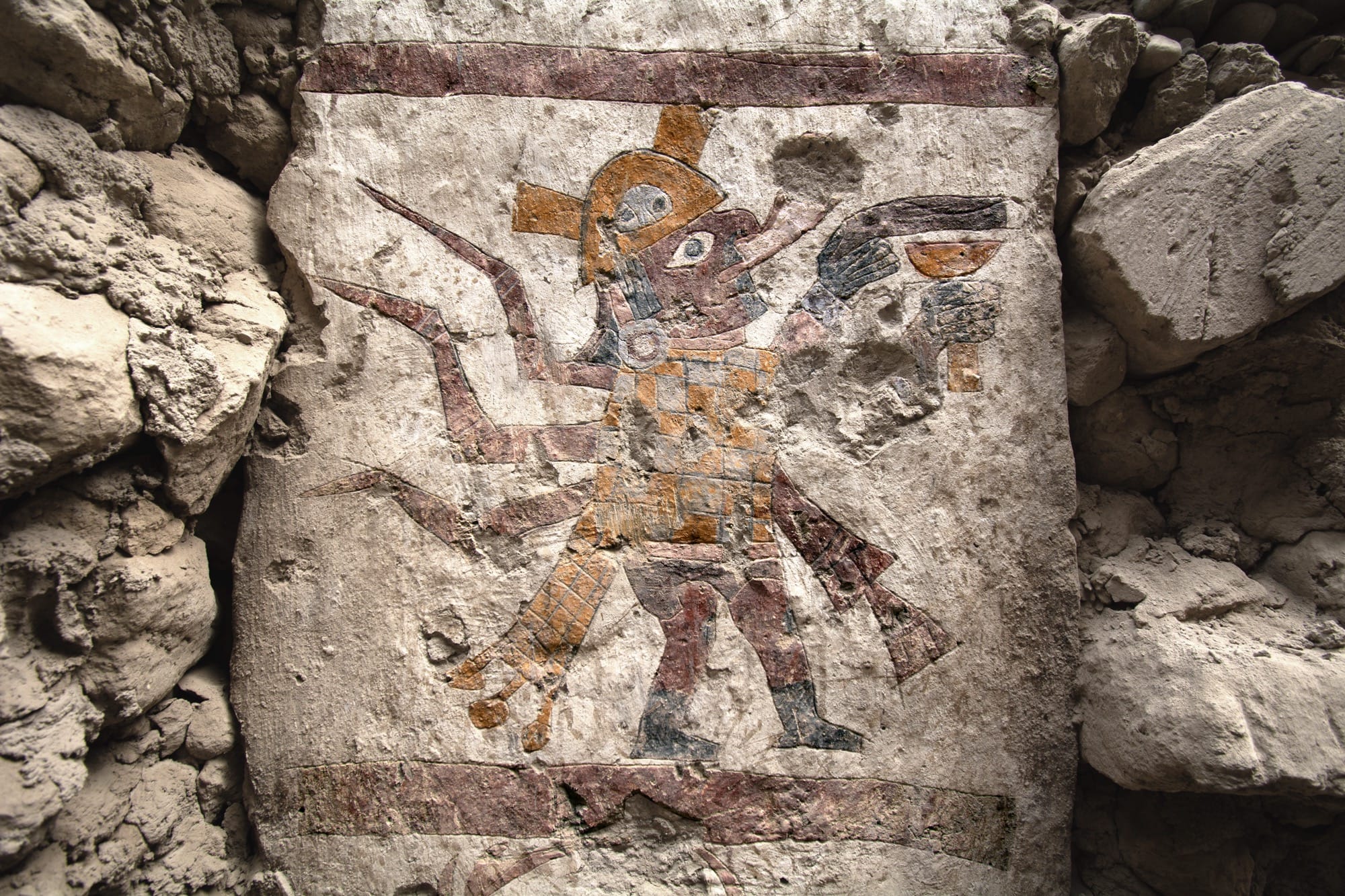“Convocation” (2023), mixed media including wood, Idenden, sand, and paint, 640 x 200 x 200 centimeters. All images © Saad Qureshi, shared with permission
Saad Qureshi’s Something About Paradise comprises three large-scale sculptures that rest on the floor or stretch up to meet the wall, supporting tiny houses and trees as if the earth has come alive and begun carrying the structures around. While developing the work, the London and Oxford-based artist traveled around the U.K. asking people what they thought paradise was like. He listened to descriptions of indistinct, fantastical places, fuzzy around the edges as if recalled from memory or dreams, and from these narratives he crafted what he refers to as a series of “mindscapes.”
Qureshi is fascinated by the power of memory and imagination, and he utilizes scale as a way of referencing how our perceptions of spaces and places change over time. “We often talk about how time feels elastic, and things that happened long ago can seem like yesterday, while other more recent experiences feel like they are a lifetime away,” he tells Colossal. “My work touches on that sense of time expanding and contracting but also on how we can have a very similar relationship to space and in particular to scale.”
Until he was eight years old, Qurashi lived in a house in Bewal, Pakistan, that felt enormous. “Remembering it as I grew up in the U.K., I still saw myself standing underneath these soaring ceilings and next to pillars as thick as tree trunks,” he says. When he returned to the house for the first time as an adult, Qureshi could practically reach the ceiling just by stretching a hand upward, and the pillars were much smaller than he recalled.
Detail of “Something About Paradise”
“At first, I was so disappointed that this house that used to go on forever seemed to have shrunk,” he says. “Then I realised that my memory of it was the memory of being eight years old.” Qureshi likens this nostalgia and longing to the way we gravitate toward stories like Alice in Wonderland, in which a young woman navigates unusual expectations and constraints of a magical realm as she grapples with leaving childhood behind.
Qureshi’s miniature landscapes often emphasize architecture as a fundamental element in our understanding of place. In “Convocation,” a tall, slender sculpture at Raffles in a Grade II-listed former Old War Office in Whitehall, a wide variety of architectural styles and details merge into a single, unified column representing the diversity of an ever-evolving modern Britain. His constructions also often sit on table-like stands or in drawers footed with wheels, like in “Tottering Pillows,” suggesting impermanence, movement, and change.
If you’re in London, you can see Qureshi’s work on view in Of Paradise and Other Places at Howick Place, presented by HS Projects, which continues through December 13. You can also check out A Handful of Paradise at I DE V / l’étrangère from September 18 to December 14. Find more on the artist’s website.
Installation view of “Something About Paradise” (2019), three sculptures, mixed media including metal, wood, Celotex, Idenden, marble dust, sand, and paint
Detail of “Tottering Pillows” (2012), mixed Media including wood, beeswax and paint, 21 x 123 x 40 centimeters
“Tottering Pillows”
Detail of “Convocation”
Installation view of “Something About Paradise III” (2019)
Detail of “Measures” (2017), mixed media including Celotex, Idenden, wood, black sand, and paint, dimensions variable
“Gates of Paradise” (2019), mixed media including wood and Idenden
Do stories and artists like this matter to you? Become a Colossal Member today and support independent arts publishing for as little as $5 per month. The article Saad Qureshi’s Elaborate Sculptures Play with Scale to Create Remembered and Imagined Places appeared first on Colossal.


